Preservation of old vehicles is a subject close to my heart. It’s just that I prefer to let others do the work. I have no doubt, however, that if I had
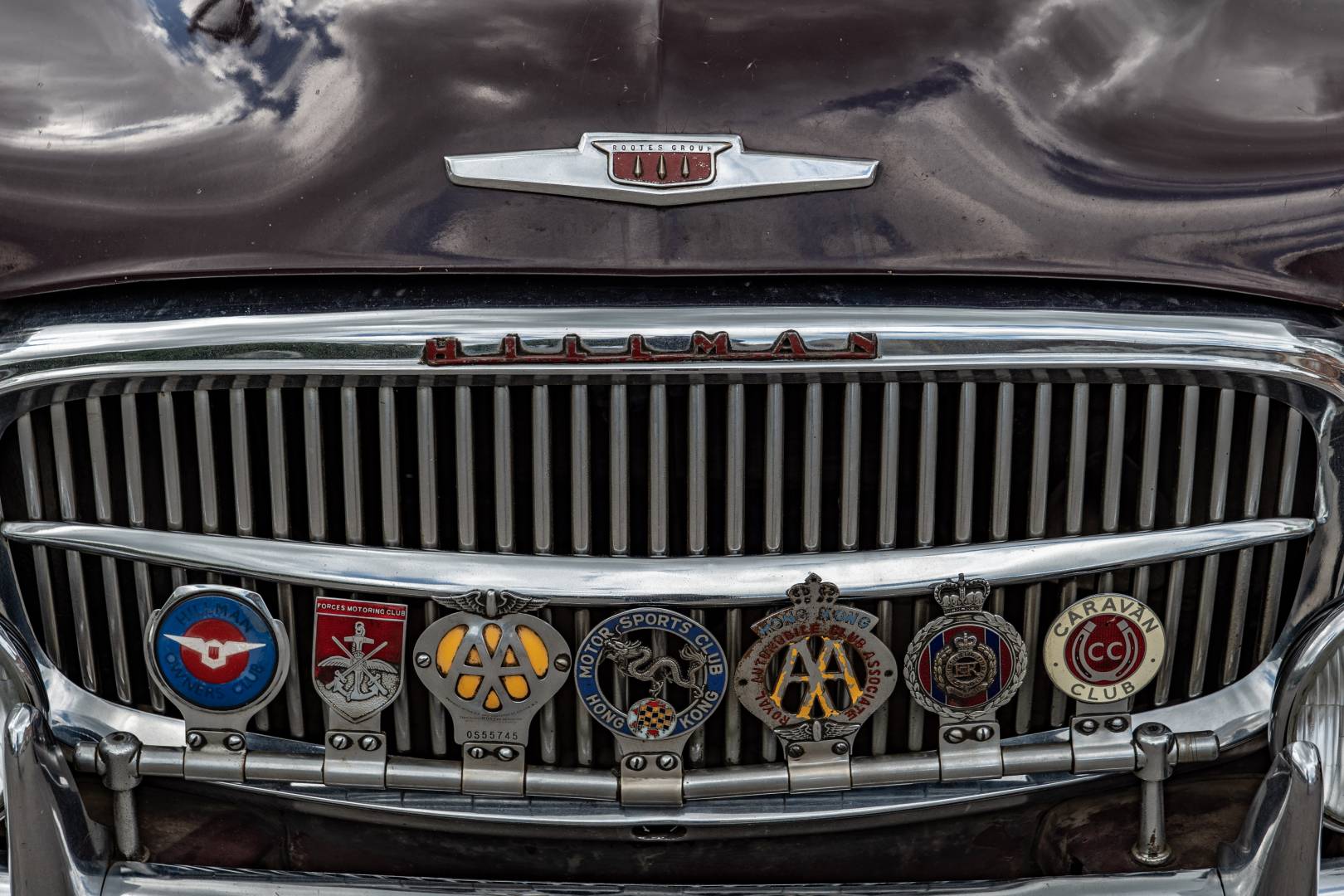
If I did succumb, such a pleasure would be more a renewing of an acquaintance rather than a totally new experience. I’m now a classic myself and I’ve seen most post-war vehicles in day-to-day use. The earliest motorcycle I’ve ridden is a 1915 Triumph, while the earliest I’ve actually owned is a 1949 500 cc AJS competition bike. It was a £10 wreck when I bought it and my father put it together over several months while I actively looked on (not being so good with the spanners myself, you know).
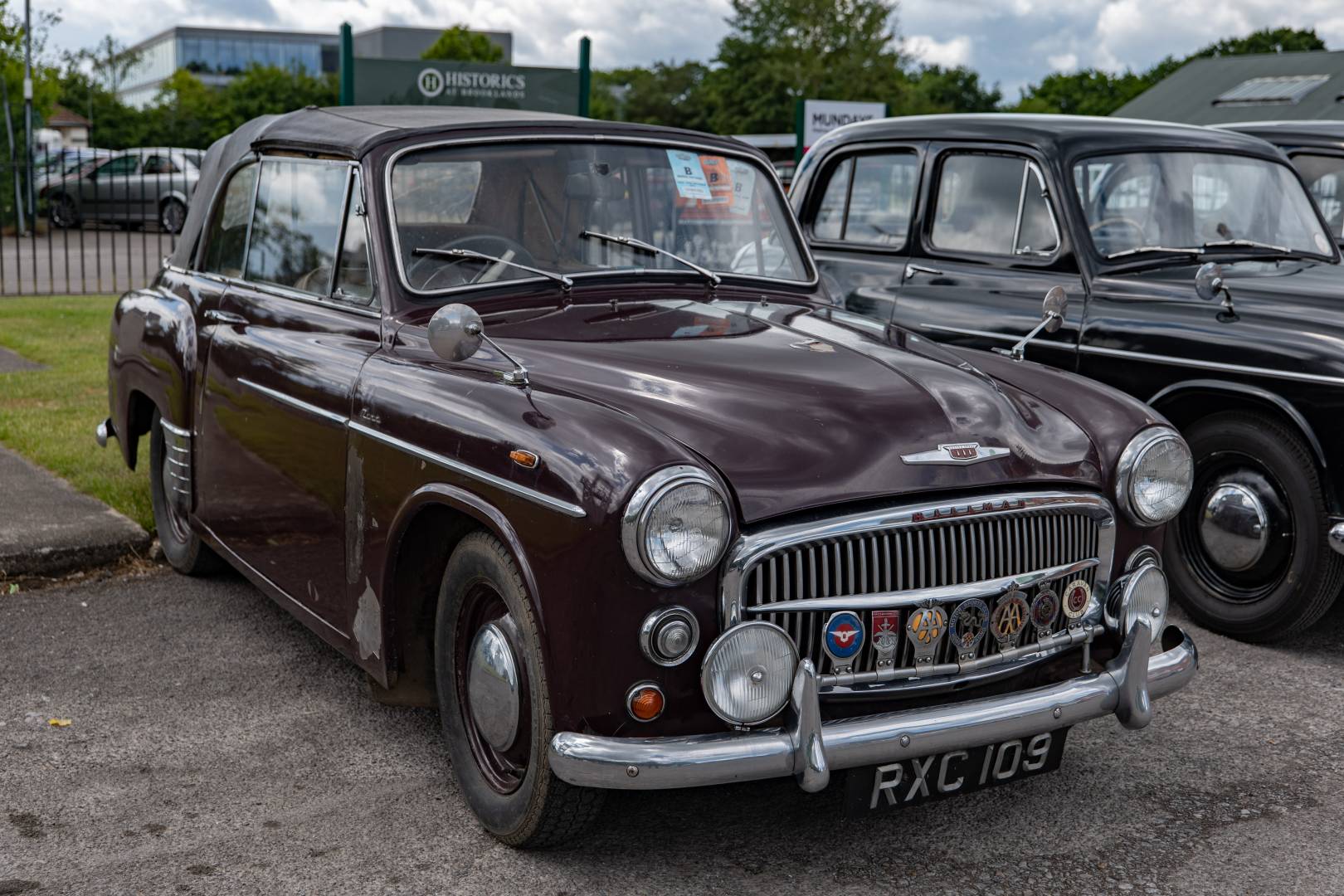
Tinkerers of the world unite
I have travelled extensively in pre-war cars as a child. My father, an inveterate tinkerer, owned a succession of pre-war Austins and Morrises, among others. I recall one holiday in the mid
The little car, laden with four souls and a fortnight’s worth of luggage, was severely challenged to maintain a steady 40 mph cruising speed, but it got us there. I still remember the smell of those 20-year-old leather seats. Nothing, however, compared with the aroma of dad’s finest barouche, a magnificent 1949 16hp Armstrong-Siddeley Lancaster.

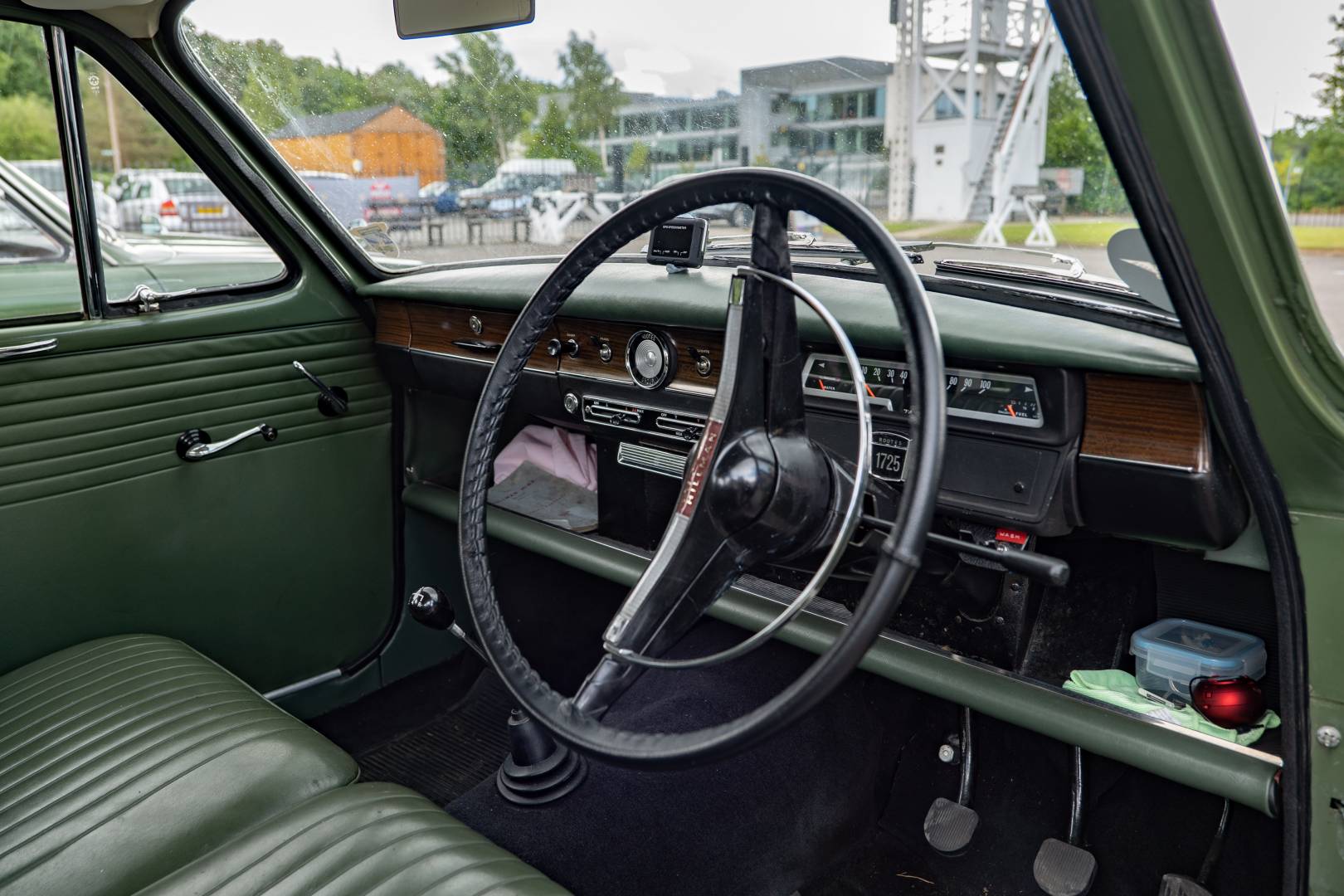
The Armstrong Siddeley is a vehicle that was ranked right up there with the best when new (ours wasn’t, it was well over the hill but smelled just as good). I always remember it had folding vanity mirrors with lights alongside the rear seats, something which imprinted itself on an impressionable young mind.
The oldest car I’ve actually owned is a 1951 Volkswagen Beetle which I bought for £60 in the mid sixties. It was one of the post-war models with the split rear screen; it was left-hand-drive and had previously been registered in what was then communist Czechoslovakia. I drove that people’s car all the way to Hamburg, Cologne and Berlin (and back to London) and it never missed a beat.
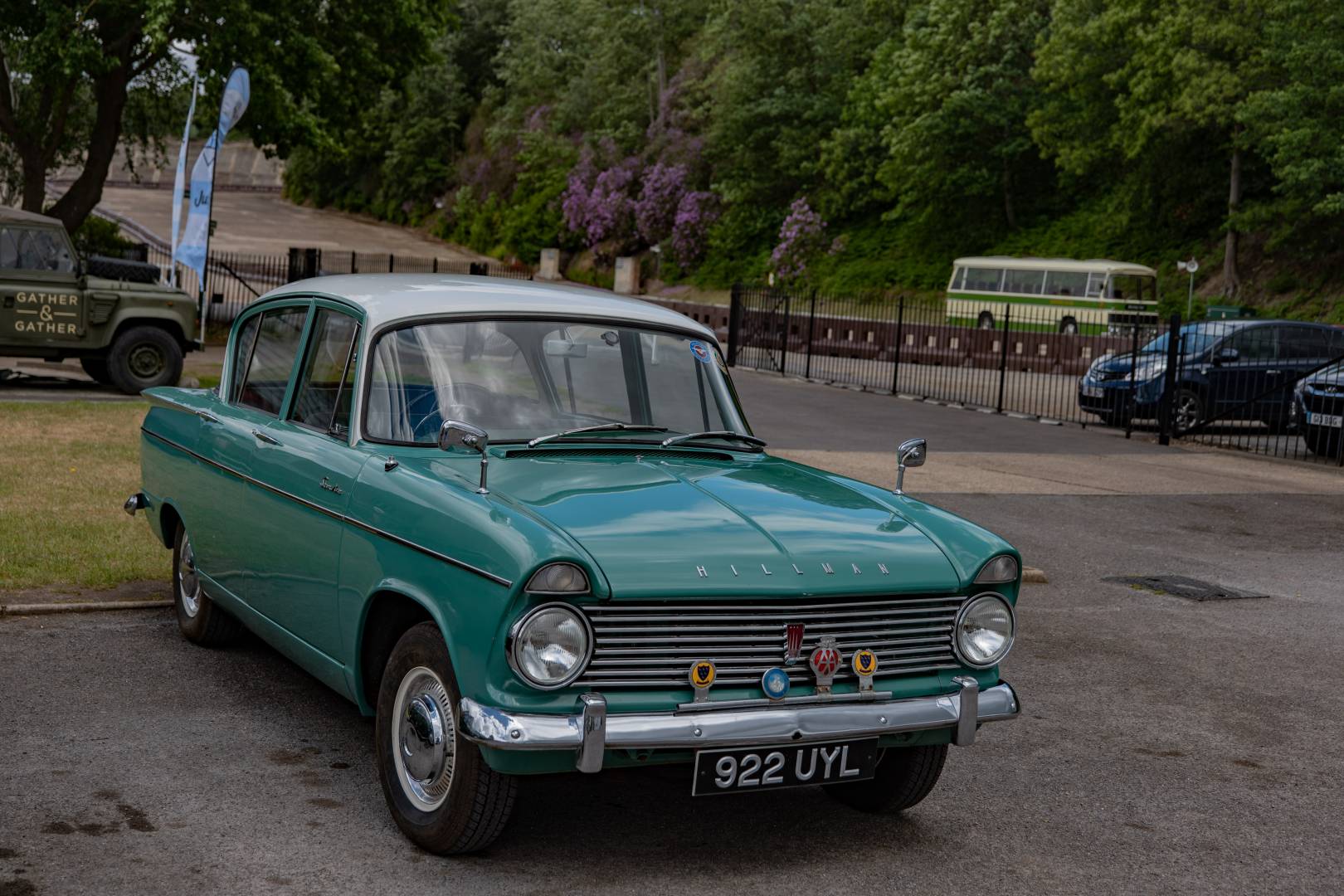
The day I met the Imp
This is more than could be said for the Hillman Imp. I bought one new in 1965 and regretted it immediately. This blunt-nosed Scottish-built vehicle had a rear-mounted 875cc engine (which didn’t add to handling on slippery roads) and cost me £508 1s 6d, according to Wikipedia (uncharacteristically, I’ve lost the invoice). However, I expect I went for the de luxe version (an extra £34) because I wanted a heater.
The Imp was by far the worst and most unreliable car I have ever encountered. I went through a clutch in the first month (it was a new car, bear in mind) and things just dropped off along the way. Far from taking it to Berlin, I was lucky to get it to Birmingham without having to call out the RAC. The Imp represented much that was bad about the then British car industry. Worse vehicles were to come, of course. To the Imp’s credit, it was better than some successors. Shoddy workmanship and wall-to-wall strikes had put paid to the industry by the late 1970s. By that time, every car was a Friday car.
Now, if you want a British-built economy runabout you have to choose between Nissan or Toyota, although the Mini, owned by BMW, is still made here. The Mini, which was the direct contemporary competition for the awful Imp, has proved its worth by surviving, although it is now much plumper than the spindly original. Ford and Vauxhall (Opel) are still around but are no longer made here.
If the Imp had not been such a dud, I suppose that, in a parallel universe, we could have now been driving around in a fatter, all-bells-and-whistles Hillman Imp, perhaps produced by BMW or Peugeot.
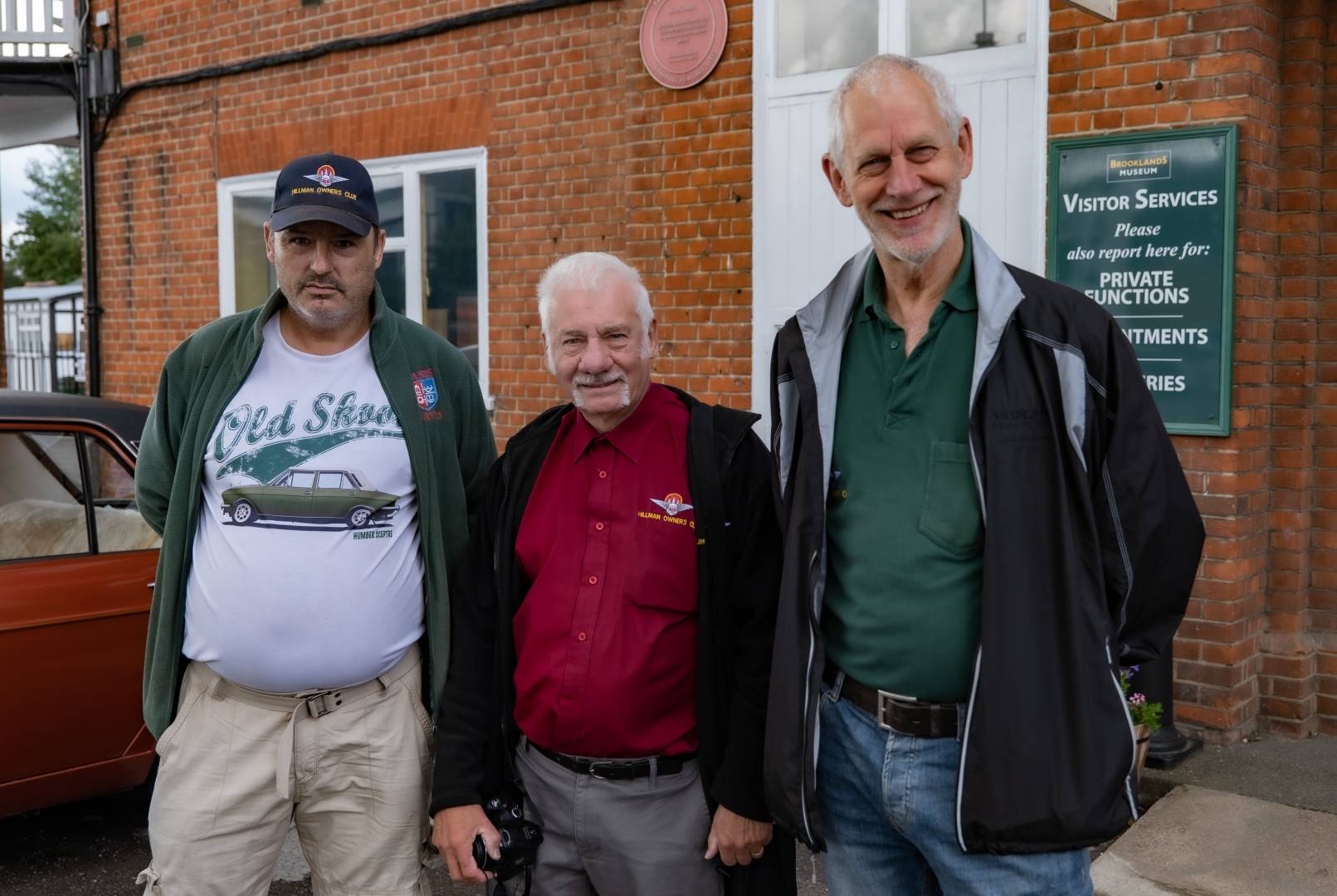
Hillman Owners
I haven’t seen an Imp for years. So when I arrived on spec at Brooklands last weekend and discovered the Hillman Owners’ Club in residence, Impish thoughts came to mind. I looked forward to taking some photographs and chatting with Imp owners about impromptu roadside halts.
Sadly, Imps were not at all in evidence. They are a bit rare in enthusiast circles, apparently — possibly because not many have survived. You’d certainly need the patience of Job and a large box of spanners if you wanted to preserve an Imp.
The Hillman Minx, on the other hand, was a much better car than the ill-favoured
The Minx was a desirable car, a cut above the average rep’s tin can of its day, and it’s so encouraging to find these cars still around. Perhaps more to the point, it is fortunate that there are enthusiasts around to preserve the marque.
We are used to old Porsches, Bentleys and other expensive cars being paraded. Most of those vehicles have survived and are cherished, unless written off in an accident. Lesser marques, such as Hillman, are in greater danger because the allure is not as great — except in the eyes of the experts at the Hillman Owners’ Club — and much of the production run has ended up in breakers’ yards over the years.
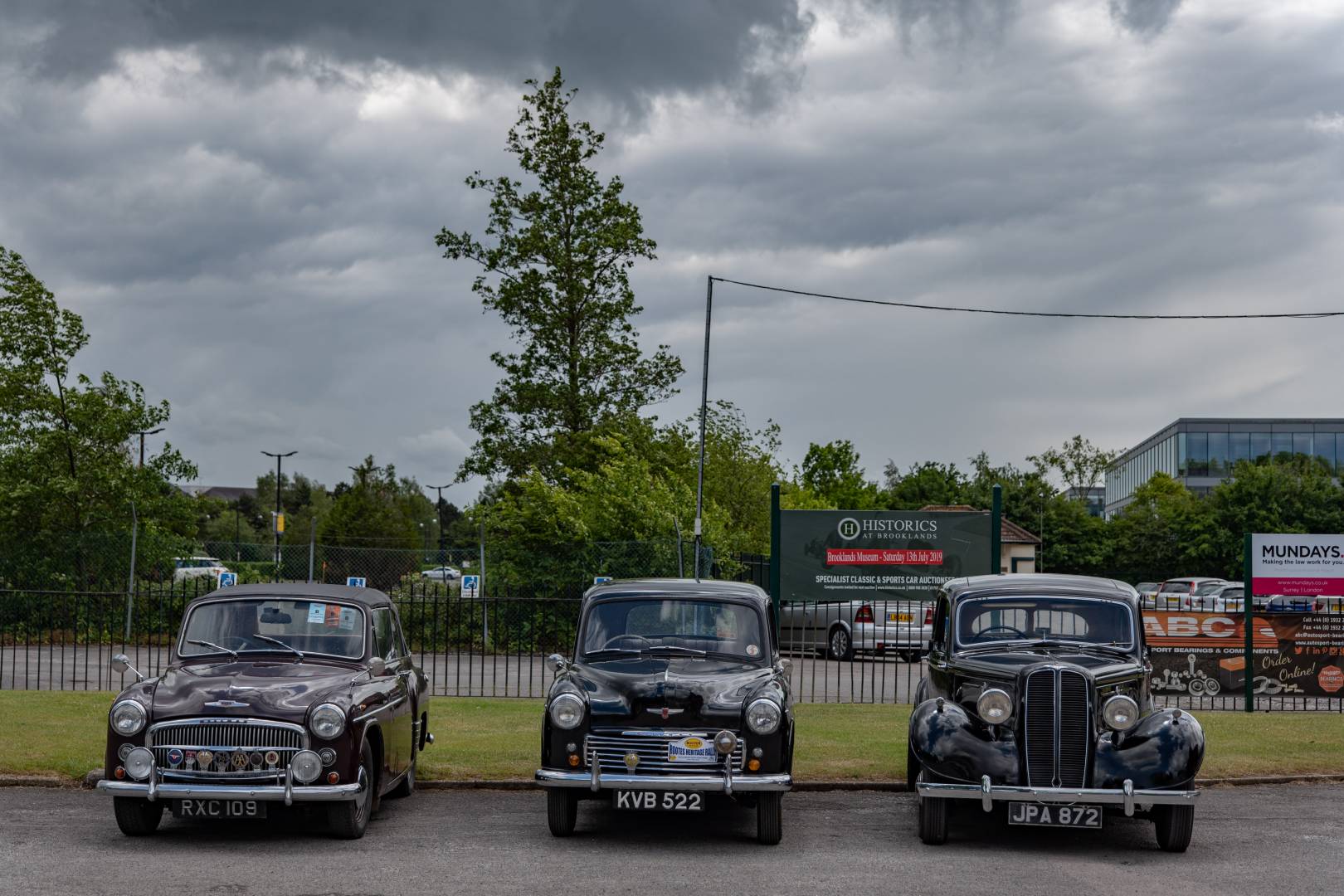
Survival game
The members of the Hillman Club, fortunately, have taken up the challenge and will ensure the survival of the remaining specimens for decades to come. It has not been easy going over the years, as I found out while chatting to the owners.
Some manufacturers, such as Ford, have given great support to preservation enthusiasts over the decades. But it is only relatively recently that Peugeot — inheritors of the Rootes Group legacy — have paid serious attention to the old marques. Back in 1977, for instance, the company threw all the old design documents and many replacement parts into skips outside their offices. Enthusiasts could be seen pulling out this valuable trove and taking it into care.

One owner of a Hillman Minx, Glenn Brackenridge, told me that there is now a dedicated centre in Banbury which is devoted to scanning and storing all the microfiches found in the course of the cleaning up operations. This is no doubt a great comfort to the current owners of these post-vintage cars.
55mph cruise

Most of the rally vehicles turned out to be Minxes. Mick Ranger showed me his pristine 1965 De Luxe Series Six with its 1725cc engine and four-speed gearbox. He’s owned the Minx for only two years but has long been involved in the classic car world, previously owning a 1968 Vauxhall Cresta.
He uses the Hillman frequently, mostly at weekends and for car meetings, and reports that it is happy cruising at 55 mph and can return up to 32 miles per gallon. Things have changed a lot in the past fifty years when even the most humble vehicle can push 90 mph and return much greater fuel efficiency.
The well-preserved 1939 Hillman 14 shown in the photographs below has been owned by Eric Strange since 1980. He bought it as part of a self challenge to own examples of both his first car and his first motorcycle.
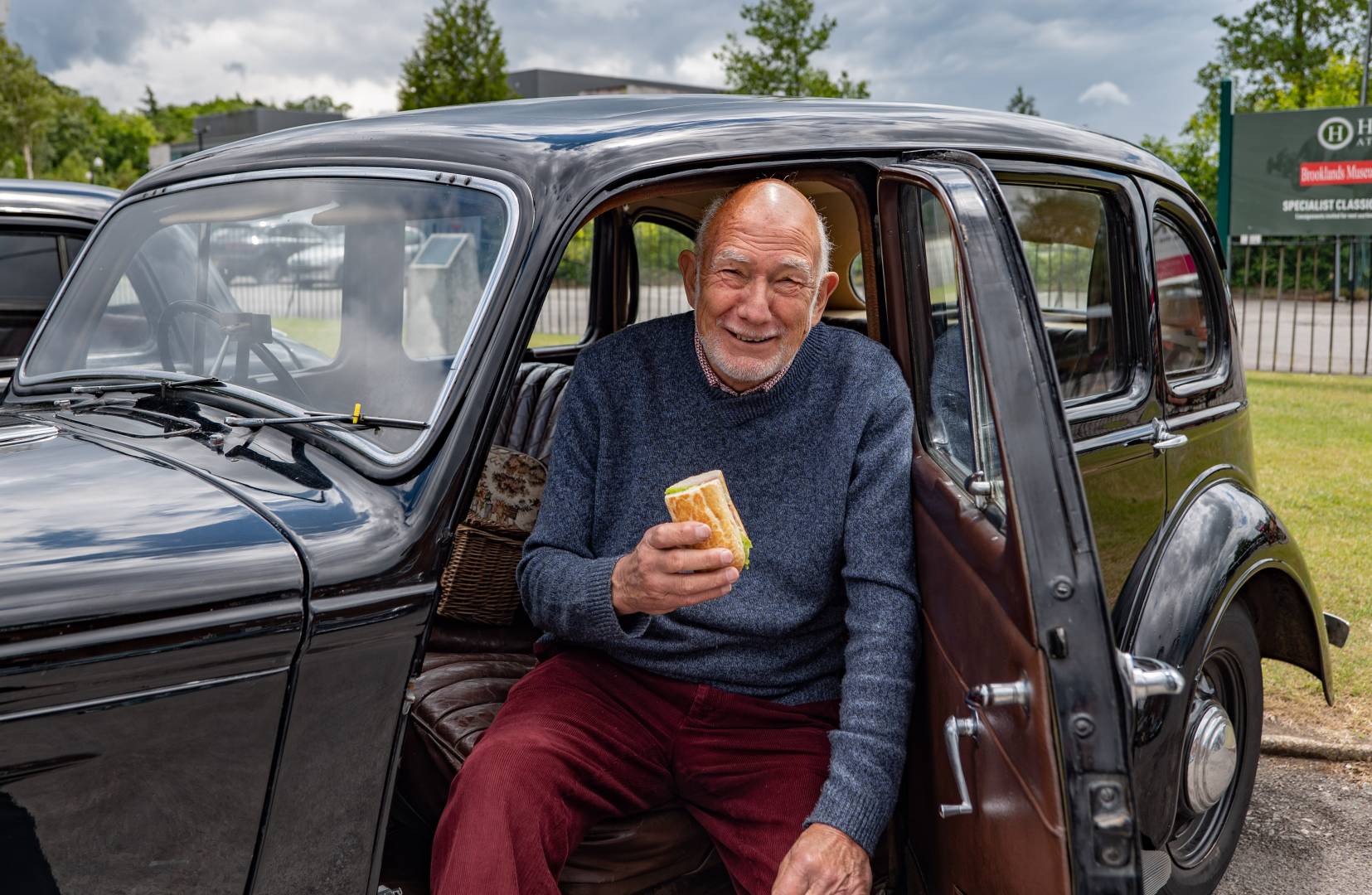
The Hillman had been the family car but Eric drove it in his teens and decided that he must have a Fourteen
Now he is the owner of a virtual replica on which he can relive his earliest two-wheel experiences. Eric is clearly a man for a bit of adventure because, in December 1962, he drove a Morris 1000 van all the way from England to India. It seems that the whiff of petroleum spirit has played an important part in his life.
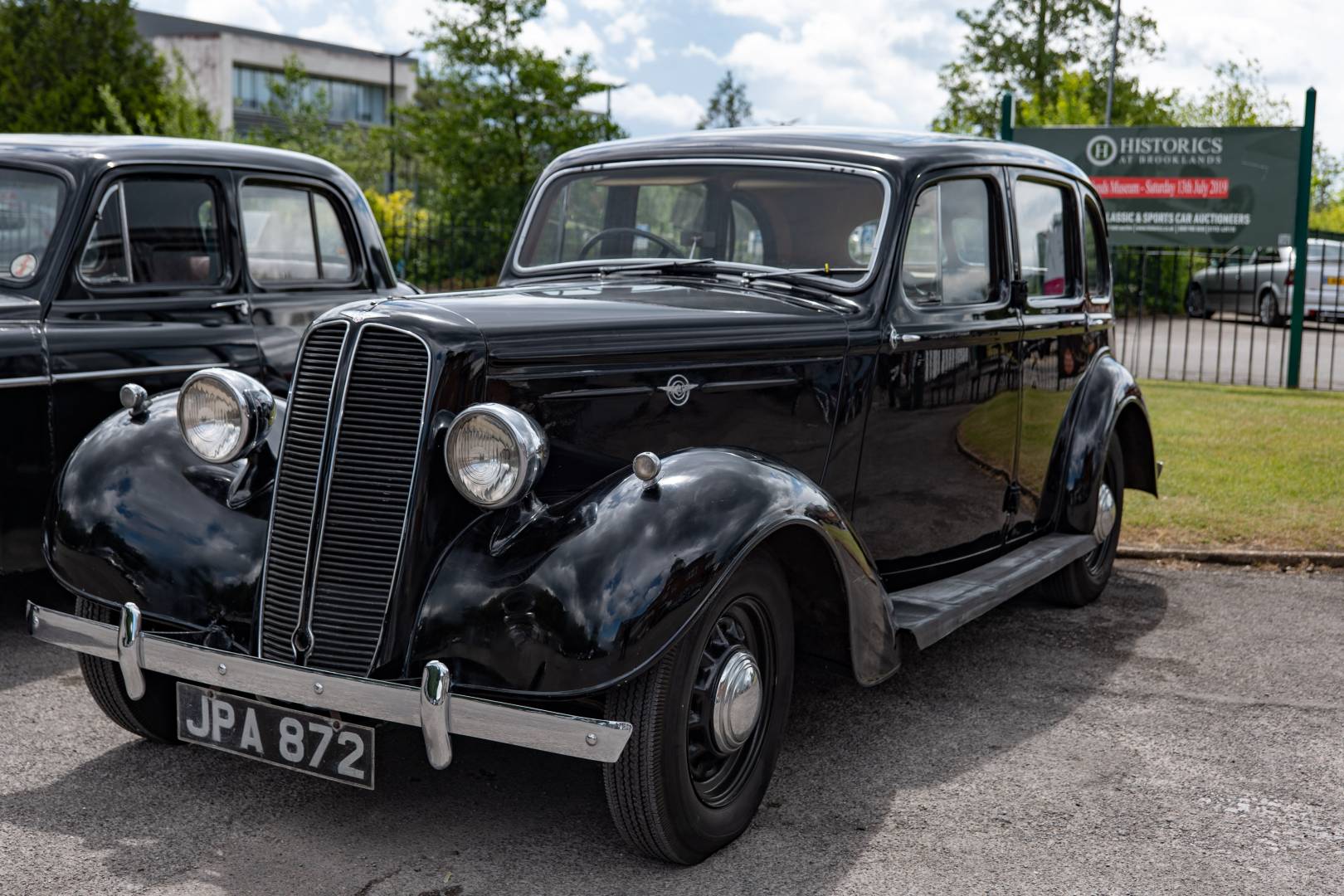
Interestingly, Eric has been a professional photographer for most of his working life. He ran a commercial photography practice in Cobham, Surrey, called Dawson Strange Photography and has retained a love of the craft in his retirement.
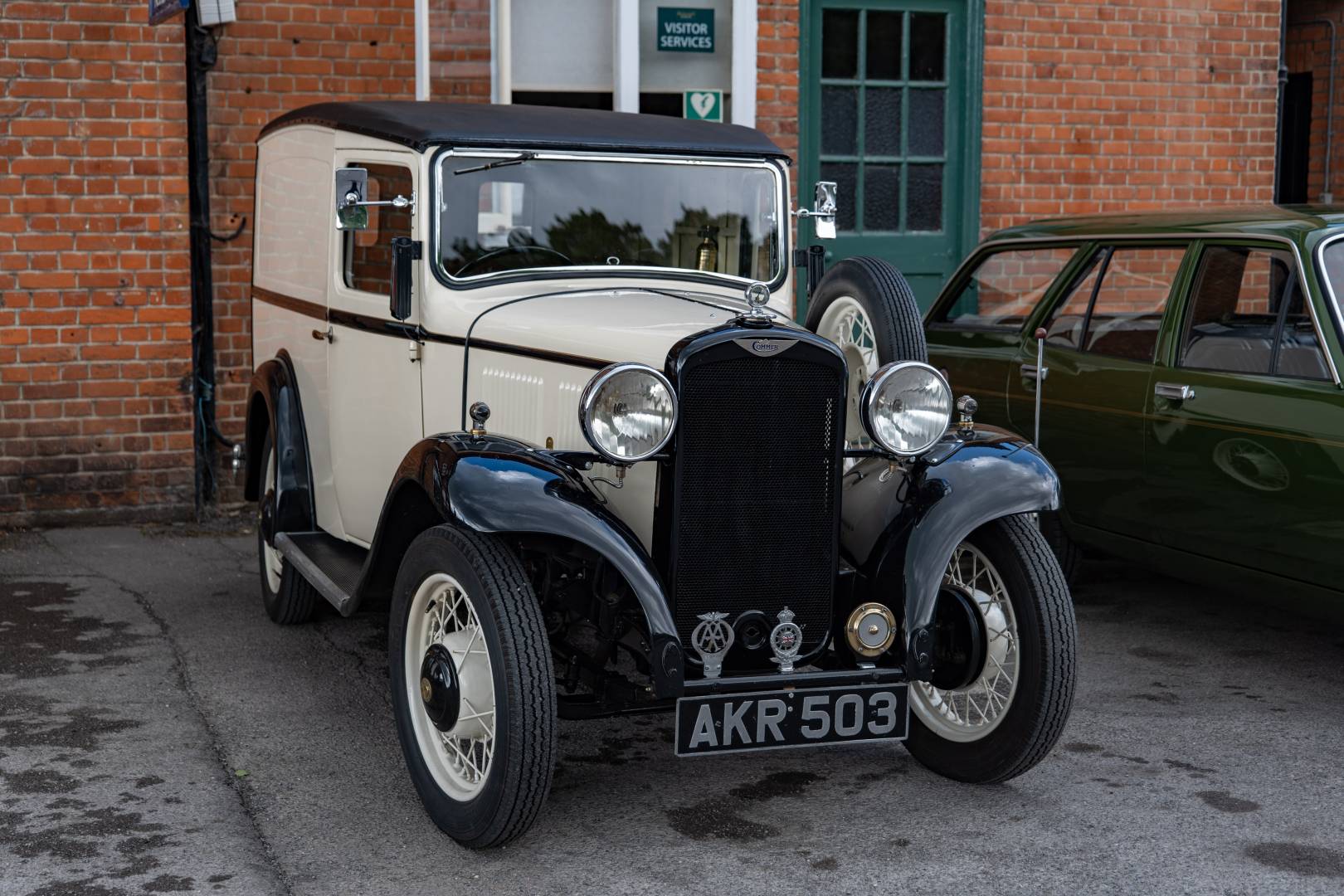
Six of the best
It isn’t only cars that catch the imagination of collectors. I found Nigel Prosser sitting in the cab of his 1934 Commer 8cwt van, a vehicle he has owned for the past five years. It is based on the 1932 Hillman Minx but only six vehicles were made. Nigel’s van, with its 10hp side-valve power unit, is the only known survivor and must be something of a celebrity in collecting circles. A month ago he drove it in the London to Brighton Historic Commercial Vehicle Run.
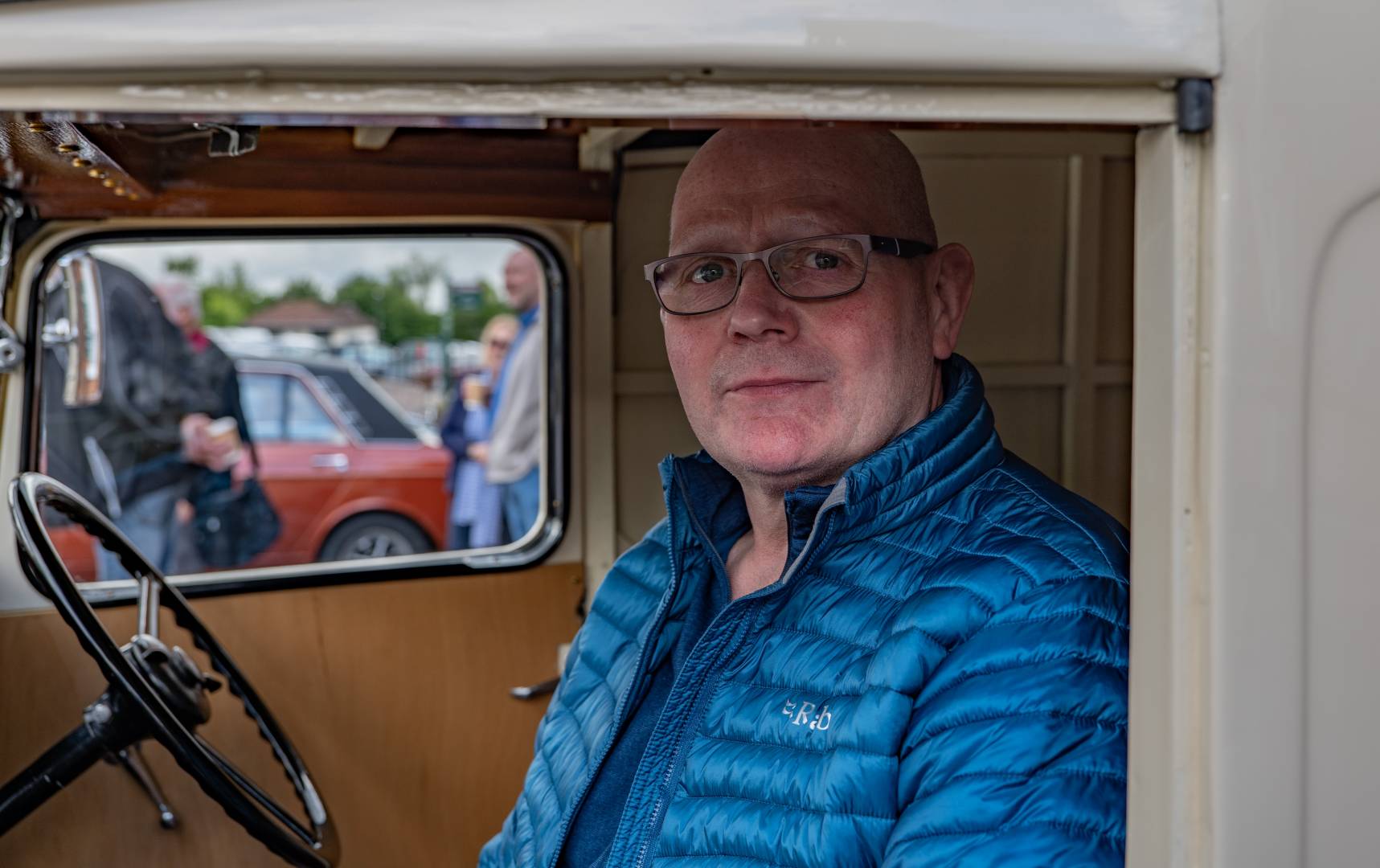
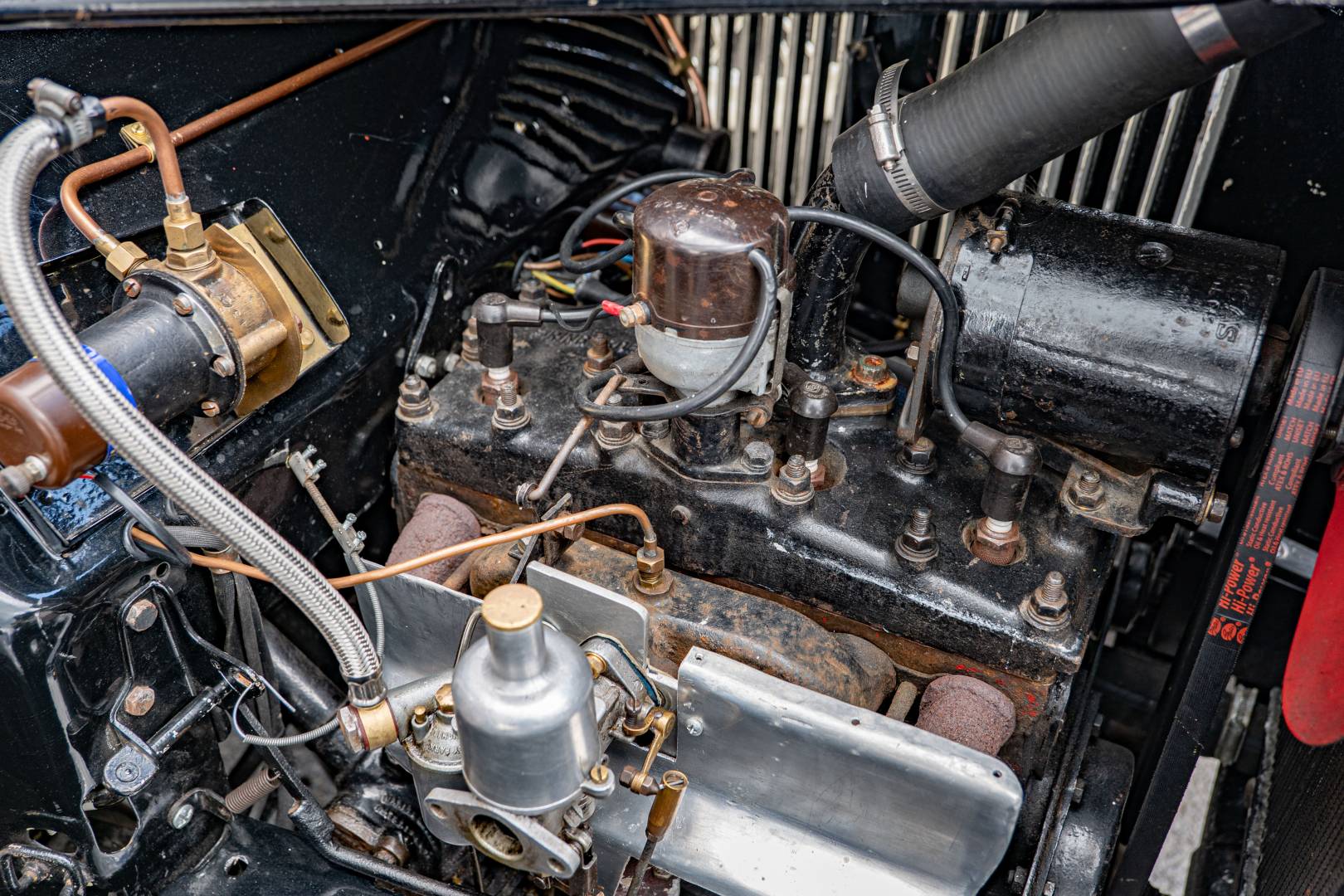
Unfortunately you won’t see Nigel’s Commer in this entertaining little video. But don’t you just love the steam lorries?
A couple of months ago, on another impromptu visit to Brooklands, I found the Bentley Drivers’ Club on full chat for their annual gathering — complete with Fortnum picnic hampers and period motoring fashions. But this is what you would expect. Everyone can identify with old Bentleys and it is sort of expected that they will be cherished and preserved, despite the enormous expense involved.
It is more surprising to find similar enthusiasm lavished on more run-of-the-mill vehicles such as Hillman. Yet you see the same brand of dedication. The preservation of these less exotic vehicles probably gives us a bigger insight into the social history of motoring than all the Bentleys, Porsches and Rolls Royces rolled into one. These were the cars one saw every day, parked in towns and out for the Sunday excursion.
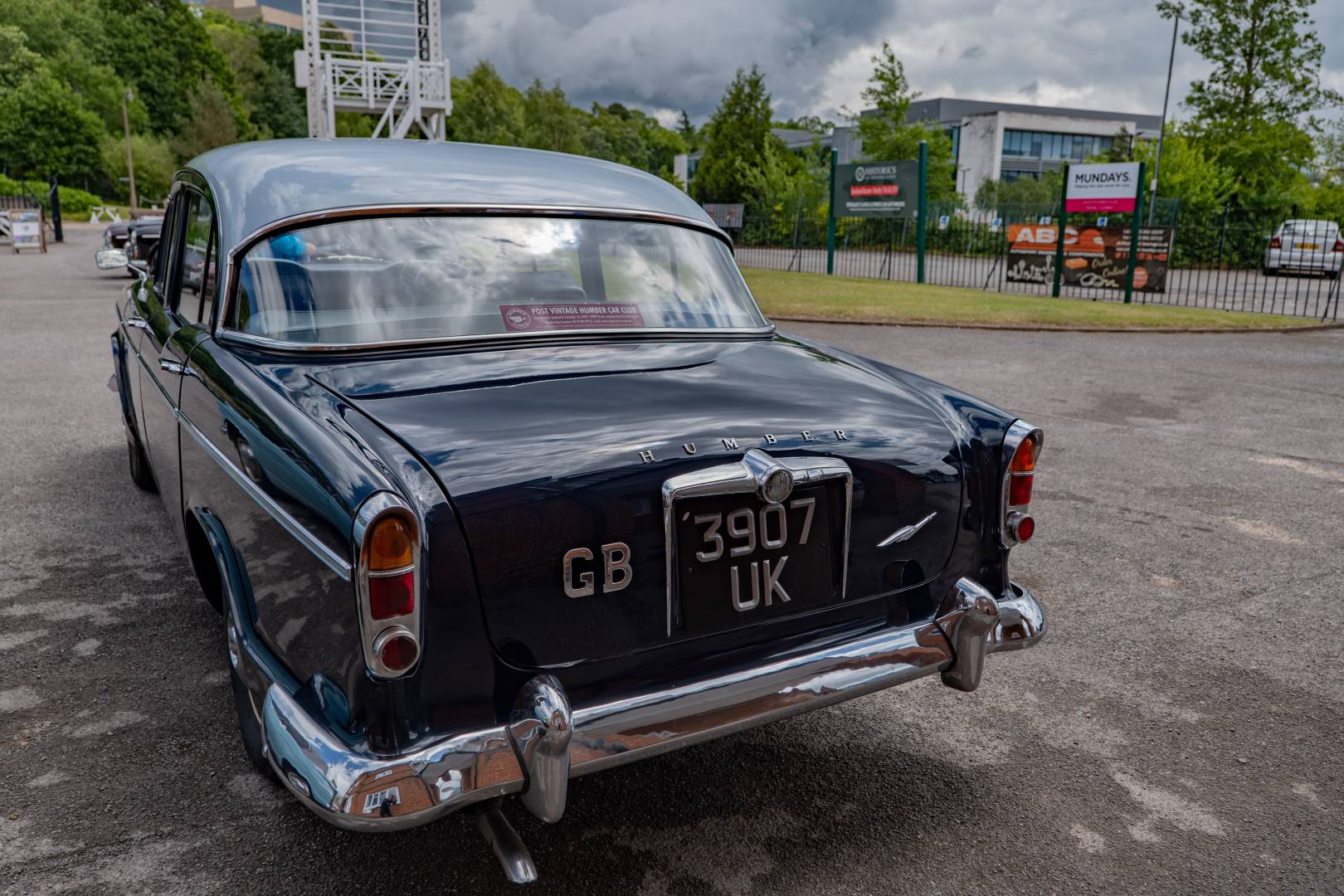
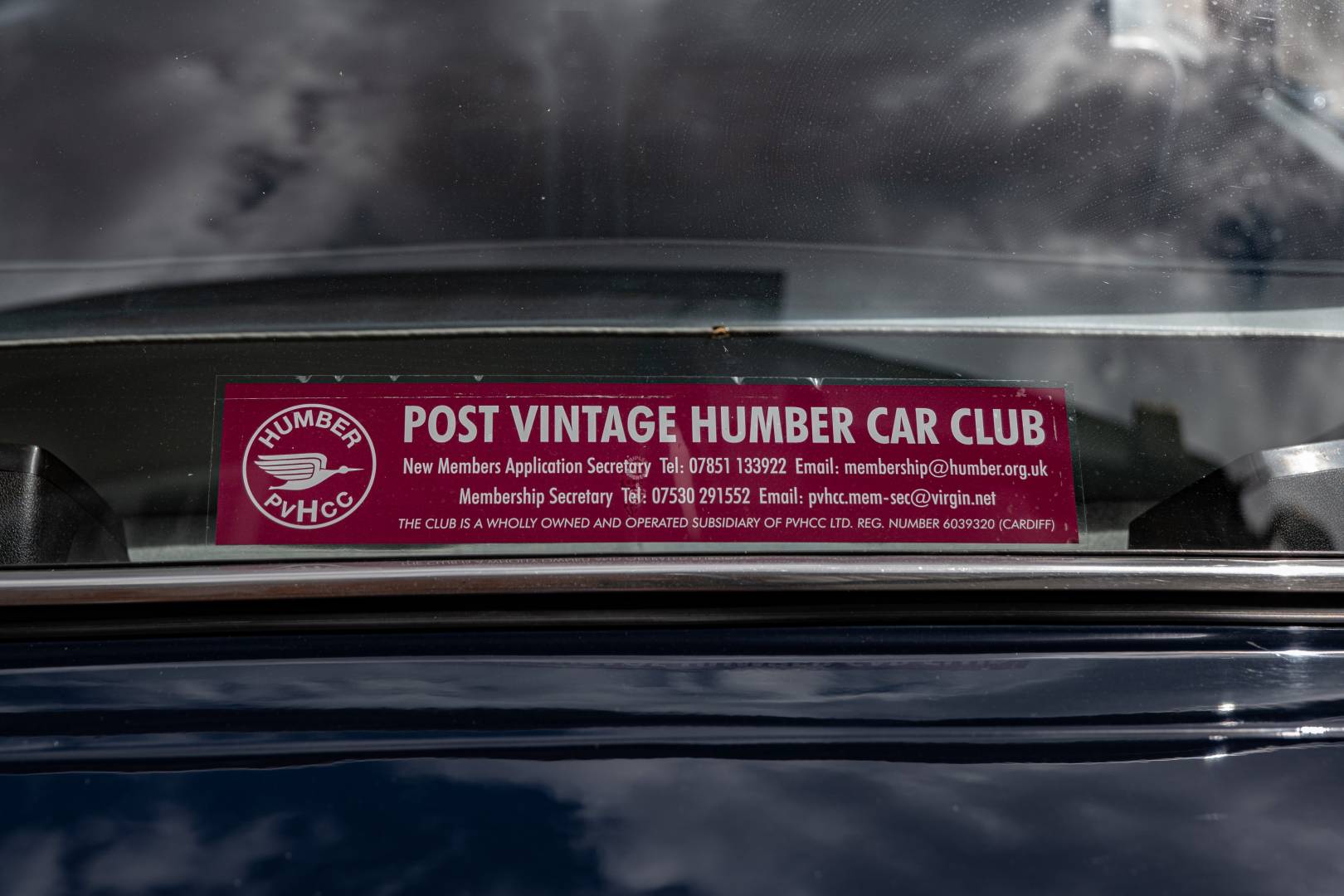
Back to the future
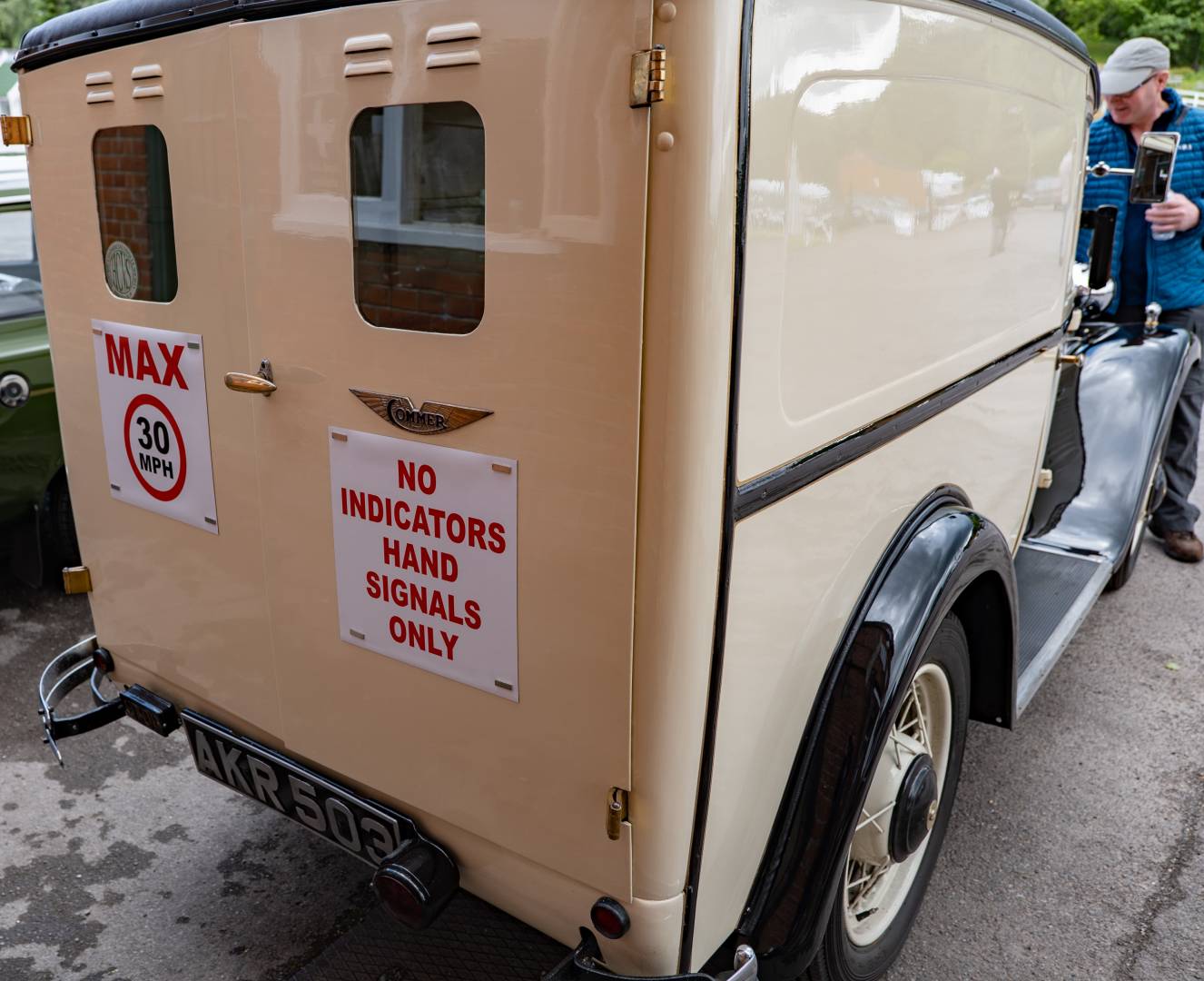
For me, seeing these popular cars from 50-plus years ago brings back a bit of my youth. I look at them — the skinny steering wheels and gear sticks, the faux American styling cues, the bench seats, and the total lack of safety features that we now take for granted — and wonder how we once thought they were the bee’s knees. When I splashed out on the Imp I would have given my right arm for a Minx.
I asked Nigel Prosser if he was worried driving his Commer van without headrests, with no airbags, no indicators, but he wasn’t concerned. After all, the van cruises at only 30mph and other road users tend to steer clear, especially with the warnings posted on the back door.
Mick Ranger also wasn’t overly concerned about the lack of modern safety aids. The biggest problem, he said, is that the 1965 Minx is slow, cruising at 55 mph, and it can cause annoyance on modern roads. Overtaking can also present a challenge, it has to be said.

Unfortunately, overall road speeds in crowded areas such as south-east England are rapidly returning to the norms of 1965 or, even, to 1935. With 20mph limits about to be introduced on roads throughout Greater London, these classic vehicles could come into their own again. I suspect the next step by the campaigners will be to reduce the speed to 12 mph and, eventually, to insist that a person (it used to be a man) with a red flag walk in front of every car.
These old cars give us a flavour of what it was like to motor in more adventurous days when all of us felt we were much freer than we are today.

Hi,
Nice to see my Hillman Minx MKVIII Convertible amongst your pictures
It was at Brooklands
The car isn’t a Californian, that model was the fixed head coupe
My car as shown on your website is 1955 not mid 60s
Great website though
Thanks, Simon. Well, you can tell I’m not an expert on Hillman Minx convertibles! I appreciate the detailed information, which will be good to keep here for posterity.
Mike
Better late than never.
Hillman Hunter, winner of the 1968 London to Sydney rally. Co-drivers, Andrew Cowan, Colin Malkin and Brian Coyle.
Thanks, Frederick, and welcome to the Macfilos commentariat. We will look forward to regular comments in future!
As a small boy recently returned/arrived in rural Yorkshire I quickly developed and obsession with cars. I collected my copy of Autocar every week, and owned (eventually) a 10 year collection of the Observer Book of Automobiles that allowed me to tell you every conceivable detail about any car in the world. My primary school headmaster had a Sunbeam Rapier, another neighbor had a Hillman Minx. But those British built car marques from the Roots Group (and BMC) were also the markers of a class driven society. I knew my teacher was superior because he drove a Sunbeam. If the accent didn’t give it away the car did. It’s good to see these cars being preserved and driven – a reminder of another way of distinguishing models, than today’s rather meaningless XLT style designations…
I bought ‘Classic and Sports Car’ magazine July edition yesterday which includes a 7 page ‘BACK POCKET ROCKETS’ comparison article featuring 3 ‘hot’ rear engined cars: 1971 NSU 1200 T, 1965 Renault 8 Gordini, and a ‘mildly fettled’ 1971 Sunbeam Imp Sport … latter available from 1966-76 and costing £665 in 1967. The Imp has a good write-up so maybe by ’71 the teething problems were sorted. I recall two friends bought Imp variants in 1967 and experienced reliable trouble free motoring … and another friend bought a new Singer Chamois every year. Over 40 small volume ‘special car’ manufacturers used Imp parts and engines and they achieved competition successes – including Imp engined racing sidecar outfits. The C&SC magazine article’s Sunbeam Imp Sport is valued today at £15,000.
I recall seeing lots of forlorn and stacked, wheel-less Imp models in scrap yards on wet Saturday mornings c.1982 … surprisingly some of their parts fitted my trusty Austin 1800 ‘Land Crab’ which I’d bought for £50 but in need of some T.L.C. – the most comfortable car I’ve owned.
Rootes manufactured / badge engineered 20 different Hillman, Sunbeam and Singer ‘Imp’ variants … over 500,000 were produced … and whole car parts kits were exported for assembly to South America, Australia, Malaysia, Portugal, South Africa and the Philippines.
My father used a succession of Hillman Minx ‘company cars’ from 1962-1968 when he averaged over 1000 miles per week driving throughout the UK … very reliable motors and he bought his final model from the company for a nominal sum ‘book price’ with over 50K miles ‘on the clock’ … whence it continued to give him good service for several more years.
With BREXIT looming, who knows what lies ahead for the UK motoring industry? Whatever happens it’s a fact that we Brits love out classic cars. According to figures published in the July ‘Classic and Sports Car’ magazine there are 1,241,863 registered historic vehicles in the UK which generate an annual £1.85 billion maintenance ‘spend’ … with an average £4913 annual maintenance cost per vehicle.
I wonder what might be the UK’s ‘classic camera’ ownership figure i.e. how many enthusiasts own classic cameras? And what might be the total £sales per year – for both cameras and maintenance? Nowhere near the above £1.85 billion – but enough to keep more than a few dealers in business satisfying e.g. our classic Leica needs and demands.
My very worst second hand car was a Hillman Imp. As a stripling, I was a shift worker in the city, I worked with the rather exotic mainframe computers of the time. I needed a reliable car, and I liked my little cars to be both frugal and quick.
Unfortunately my Imp was quick in the most unhelpful manner, this was the most flaky engine, due entirely to its location at the back of the car, where an all aluminium block and head is in a position where it will readily overheat.
I don’t think that in the three months that I owned it, that I ever made it to the city without it breaking down en route.
Shame really, because the engine is still one of the best, it is called the “Coventry Climax” and it was used in the early Lotus cars for its fantastic acceleration. Its main use however, was/is as the motor for fork lift trucks.
I paid £130 I seem to remember, and lost most of it after it irretrievably broke down. The replacement I recall was a colleague’s 1962 Mini Cooper S, which had been one of the first of the marque, with a 1071cc engine. Unfortunately my friend had replaced that with a 998cc Cooper engine, to which he had added a stage 2 head and swan necked exhaust manifold. The car was almost as fast as the Imp, but kept going, it was very reliable but had virtually non-existent brakes.
I recall this was great fun when I executed a stunning ballet move on a local hill, and ended up with the rear end in a ditch.
Happy days!
I used to fix marine generator sets; a vertical pile of hardware with the generator (dynamo or alternator) at the bottom, I think, and the drive motor at the top ..they were all Coventry Climax engines and – once started – never missed a stroke.
David , the Hillman Imp engine was in fact a Coventry Climax based SOHC 750cc unit. Coventry Climax made superb racing engines and Cooper and Lotus enjoyed great Formula one success with Coventry Climax power..
The problem with the Imp was not the engine it was a combination of Rootes being forced by the government of the day to locate the Imp factory in Scotland to provide employment to miners displaced by the closure of coal mines and a grossly under-engineered design. It was not a formula for success.
The handling of the car was not helped by the fact that six weeks before launch it was discovered that the headights were located marginally lower than the legal height. The desperate solution to this was to put exaggerated camber on the front wheels to lift up the front of the car. This really did not help the handling one iota.
So you had a grossly under-engineered car with the engine hanging out the back behind the rear axle, with weird front suspension put together by a militant workforce whose previous employment was hewing coal underground . It never stood a chance.
The Imp was a car that could be fettled to go seriously quick. Google Image “Andy Bryson Imp”. I was passed by him in a rally a few years ago. On the next corner, a left-handler, he was up on three wheels. Then the next corner, a right-handler, he was on a different three wheels. That’s one way to save on tyre wear.
We had an Imp for a while during the late 70’s, it rattled badly, and we drove round everywhere with several gallons of water in bottles – just in case it blew a hose. Whereby we would sit on the side of the road until it cooled down. Thankfully we replaced it with something more reliable.
Dave
Ah, Mr Williams, the taxi driver in Deganwy (North Wales) drove a Hillman (Minx?) when I were a lad aged about six (..and I got a 1p (penny) Forte’s ice-cream cone if I were good).
Hillman Imps, of course, were the stars of François Truffaut’s ‘Fahrenheit 451’ in 1966, with Julie Christie, you’ll obviously remember, and when I were (..sorry about this affectation..) an AA breakdown repairman in, er, 1972(?) I remember going out to an Imp whose driver had filled the brake fluid reservoir with frying oil, thinking it would do the same job.
The apocryphal story is that a driver topped-up the radiator coolant – at the back, on an Imp – with petrol, thinking it was the fuel filler, drove five miles, then the engine exploded.
Them were’t days..
You were obviously a dab hand with the spanners, young David, and I am sure you would have got on well with my Imp. You could probably have slipped in a new clutch in the takes to focus a Leica M10. The rear engine of the Imp was reminiscent of Porsche and Volkswagen. But there the similarity ended, except in respect of the handling. Mind you, the Imp was an improvement on the BMW Isetta bubble car that I had to road test about the same time.
“..slipped in a new clutch..” We-ell, when I bought a Honda N600 – about the same size as an Imp, but powered by half a motorbike engine – from Mac Campbell of ‘Angling Times’ for £50, he towed it round to my house and it just sat there for a month or two. (He’d taken apart the clutch, but couldn’t put it back together again, so sold the car to me as more or less spare parts.)
One Saturday, with nothing to do, I popped outside with a pair of wheel ramps and put it back together in half an hour ..and drove down to Cornwall (..40mph on the flat, 60mph downhill ..with the requisite following wind). I used it for a few years, till a goat ate most of it in Poplar Dock, east London, then changed to a big white (manual gearbox) convertible Jaguar with white-wall tyres ..what a saga that became!
As for an Isetta – which I seem to remember had four wheels in Germany, but only three in the UK, so that you could drive it on a motorcycle licence like a Robin Reliant – when I borrowed Jimmy Savile’s Rolls-Royce (for a little film I was making) his chauffeur used to follow behind in the bubble car when Jimmy was driving the (white, convertible) Roller.
The CEO of a big German engineering firms used to drive – still does! – an Isetta all around Europe ..just for fun! He’s either in the company plane ..or in his Isetta!
I notice you left out the uphill speed of the N600. My father used to call these cars Roll Cannardly’s.
“Uphill Speed”? What “uphill speed”? ..When it got to a hill I’d just get out and push..